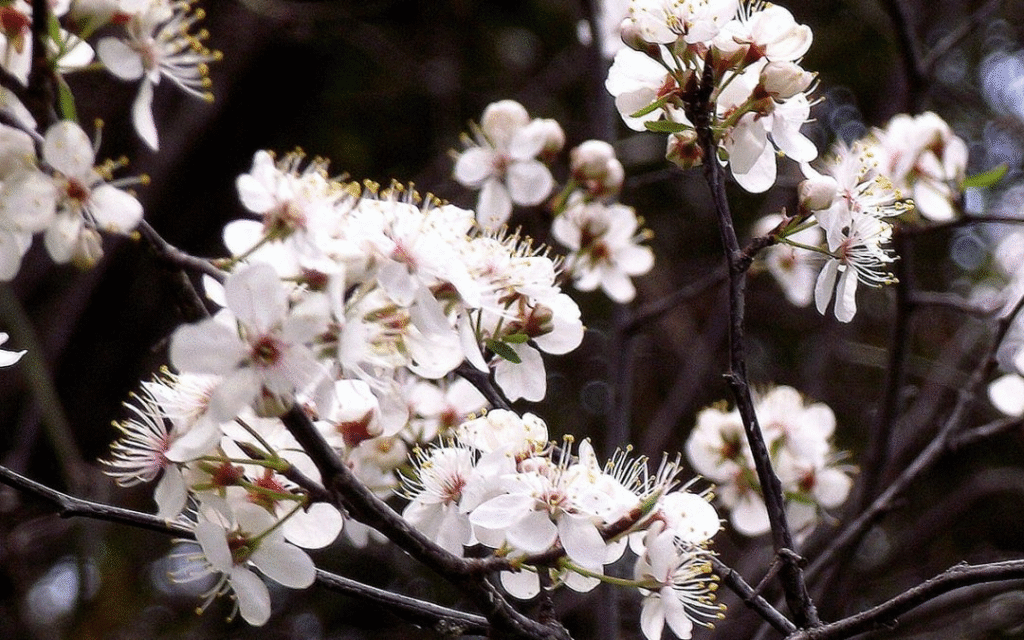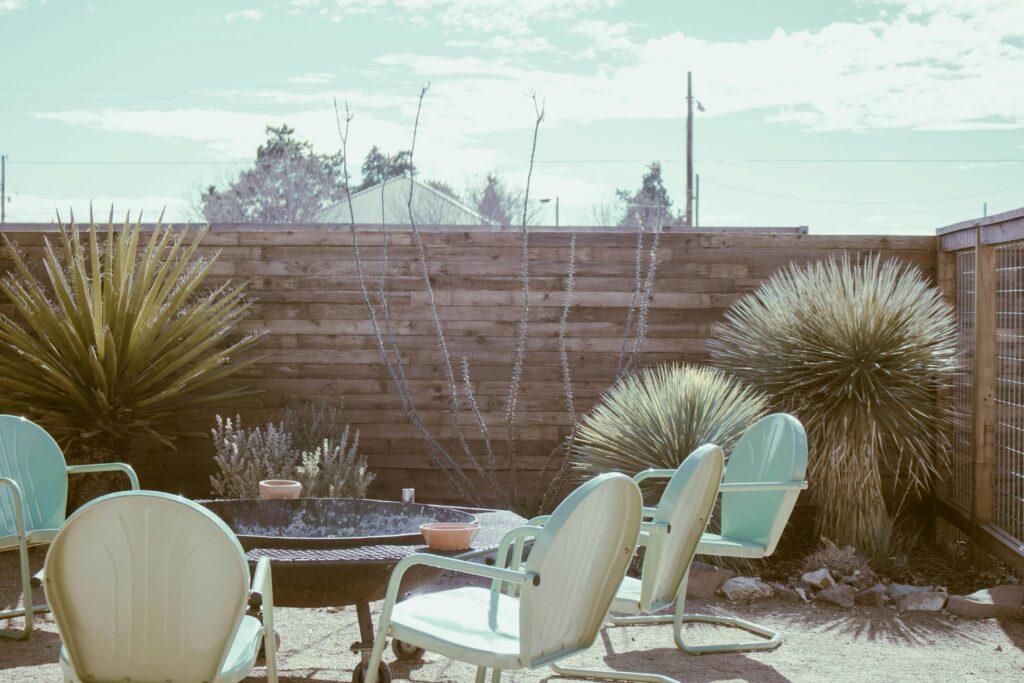Texas stretches from piney woods to high desert, yet yards all over the state still cling to thirsty turf and exotic shrubs that need constant rescue watering. Texas native plants flip that script. Evolved for sizzling summers, flash-flood winters, alkaline clays and sandy loams, they thrive with far less fuss—and they feed the butterflies, birds, and pollinators that make a garden feel alive. Below you’ll find 25 landscape-ready natives (trees, shrubs, groundcovers, vines, and wildflowers), a quick planting plan, and expert resources
Why Plant Texas Natives?
- Water savings: Established natives need as little as 25 % of the irrigation required by non-native lawns Texas A&M AgriLife Extension Service.
- Wildlife habitat: Oaks alone host hundreds of butterfly and moth species; firebush and Texas lantana power hummingbird migrations.
- Pest resistance: Locally evolved plants shrug off native insects and diseases.
- Resilience: From Gulf Coast hurricanes to West Texas freeze-thaw cycles, natives bounce back faster than imports.
For in-depth benefits, explore Texas A&M AgriLife’s native landscaping hub Texas A&M AgriLife Extension Service.
Match Plants to Your Eco-Region
Texas contains 10 ecoregions—Hill Country limestone, Blackland Prairie clays, South Texas sand, and more. Use the Lady Bird Johnson Wildflower Center’s plant database to filter species for your zip code Lady Bird Johnson Wildflower Center.
1 | Native Trees – The Backbone
| Common Name | Height | Region | Extra Perk |
|---|---|---|---|
| Live Oak (Quercus virginiana) | 50–70 ft | Hill Country, Coastal | Evergreen shade, wildlife acorns |
| Bur Oak (Quercus macrocarpa) | 70 ft | North & Central TX | Huge leaves, drought & clay tolerant |
| Desert Willow (Chilopsis linearis) | 25 ft | West & South | Orchid-like blooms, minimal water |
| Texas Redbud (Cercis canadensis var. texensis) | 15–20 ft | Statewide except Coast | Pink spring flowers |
| Mexican Plum (Prunus mexicana) | 20 ft | Central, East | Fragrant white bloom; edible fruit |

Planting tip: Plant in fall so roots establish before summer heat.
2 | Shrubs & Sub-Shrubs – Color & Structure
| Shrub | Size | Sun | Highlight |
|---|---|---|---|
| Flame Acanthus (Anisacanthus quadrifidus var. wrightii) | 4 ft | Full | Summer red tubes = hummingbirds |
| Turk’s Cap (Malvaviscus arboreus var. drummondii) | 4 ft | Shade | Red blooms, edible fruit |
| Texas Sage (Leucophyllum frutescens) | 5 ft | Sun | Purple flush after rain |
| Agarita (Mahonia trifoliolata) | 6 ft | Sun | Yellow winter flowers, berries |
| Rock Rose (Pavonia lasiopetala) | 3 ft | Sun/part | Pink hibiscus-like blooms |
Prune lightly after flowering; heavy summer cuts stress drought-adapted shrubs.
3 | Grasses & Groundcovers – Living Mulch
| Plant | Height | Spread | Best Use |
|---|---|---|---|
| Gulf Muhly (Muhlenbergia capillaris) | 3 ft | Clumping | Pink fall plumes |
| Blue Grama ‘Blonde Ambition’ (Bouteloua gracilis) | 2 ft | Clump | Seed “eyelashes” through summer |
| Texas Frogfruit (Phyla nodiflora) | 6″ | Creeping | Bee lawn, tolerates mowing |
| Silver Ponyfoot (Dichondra argentea) | 2″ | Spiller | Cascades over beds & pots |
| Horseherb (Calyptocarpus vialis) | 4″ | Shade | Evergreen lawn alternative |
Mulch new plantings with shredded hardwood; pull mulch back from crowns to avoid rot.
4 | Vines & Climbers – Vertical Interest
| Vine | Zone | Support | Feature |
|---|---|---|---|
| Coral Honeysuckle (Lonicera sempervirens) | 5–9 | Fence/trellis | Red tubes feed hummingbirds |
| Passionflower (Passiflora incarnata) | 6–10 | Arbor | Host for Gulf fritillary caterpillars |
| Crossvine (Bignonia capreolata) | 6–9 | Pergola | Spring orange trumpets |
| Virginia Creeper (Parthenocissus quinquefolia) | 3–9 | Chain-link | Red fall color |
| Purple Leatherflower (Clematis pitcheri) | 5–9 | Trellis | Pendant purple bells |
Cut vines to 12 inches each February for fresh growth.
5 | Wildflowers & Perennials – Seasonal Pops
| Flower | Bloom | Soil | Note |
|---|---|---|---|
| Bluebonnet (Lupinus texensis) | March–April | Well-drained | State flower; reseeds easily MySA |
| Indian Blanket (Gaillardia pulchella) | Spring-fall | Sandy | Long season color |
| Winecup (Callirhoe involucrata) | Spring | Loam/sand | Magenta groundcover |
| Mexican Hat (Ratibida columnifera) | Summer | Dry | Yellow-red cones |
| Engelmann Daisy (Engelmannia peristenia) | Spring–summer | Clay tolerant | Adaptive across state |
Sow seed mixes in November; winter rains trigger germination.
Quick Planting Plan (100 sq ft Bed)
- Anchor Tree: Mexican Plum (center)
- Midstory: 2 Texas Sage, 3 Flame Acanthus (3 ft apart)
- Understory: 5 Gulf Muhly clumps (2 ft apart)
- Edge: 10 Bluebonnets broadcast + Silver Ponyfoot as border
- Vertical Accent: Coral Honeysuckle on 6-ft trellis
Water weekly the first summer; thereafter, rainfall plus a monthly deep soak in droughts.
Annual Care Calendar
| Season | Task |
|---|---|
| Fall (Oct–Nov) | Plant containers; sow wildflower seed. |
| Winter | Mulch 2 in; prune shrubs by one-third. |
| Spring | Deadhead wildflowers to direct reseeding; add compost top-dress. |
| Summer | Deep soak trees every 4 weeks if <1″ rain; monitor for aphids. |
| Early Fall | Collect seed heads; shear grasses by half. |
No fertilizer needed unless a soil test shows deficiency.
Where to Buy Texas Native Plants
- Lady Bird Johnson Wildflower Center Plant Sale – Austin Lady Bird Johnson Wildflower Center
- Texas A&M AgriLife Extension Plant Lists – regional PDFs Texas A&M AgriLife Extension Service
- Local native nurseries – search “Texas native nursery + your city.”
Frequently Asked Questions
Are Texas natives always deer-proof?
Few plants are truly deer-proof, but agarita, Texas sage, and silver ponyfoot are seldom browsed.
Can I grow these in containers?
Yes—flame acanthus, gulf muhly, and passionflower thrive in 15-gallon pots with coarse, well-drained mix.
When do I cut back grasses?
Late winter (February) before new shoots emerge; leave 6 inches of stubble.
How much should I water?
After year one, most natives survive on rainfall. In extreme drought, deep soak once a month.
Final Thoughts
Landscaping with Texas native plants means lower water bills, more butterflies, and a yard that still looks alive after August triple digits. Start small—a Mexican redbud, a drift of bluebonnets—and watch the pollinators roll in. Ready to dig? Grab AgriLife’s regional guide, mark your sun map, and let the Lone Star flora do the heavy lifting.
Share your successes or questions below; between mulching oaks and sipping sweet tea, I love swapping native plant stories. Happy planting, y’all!
Sources



